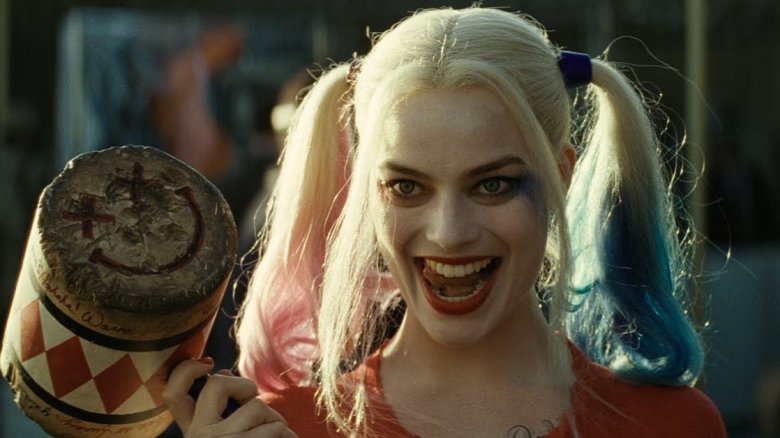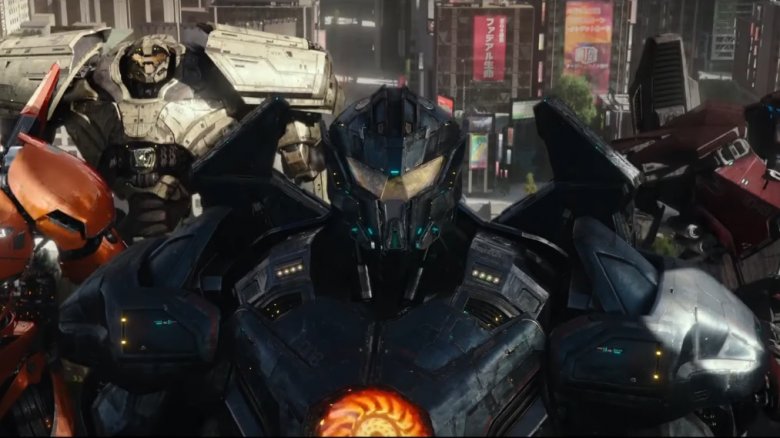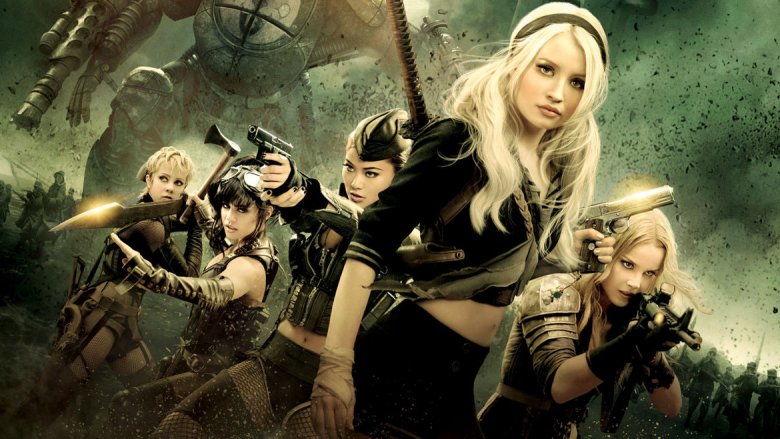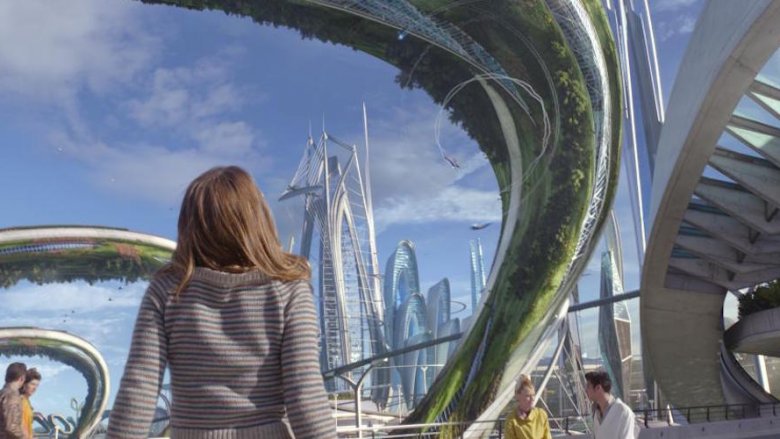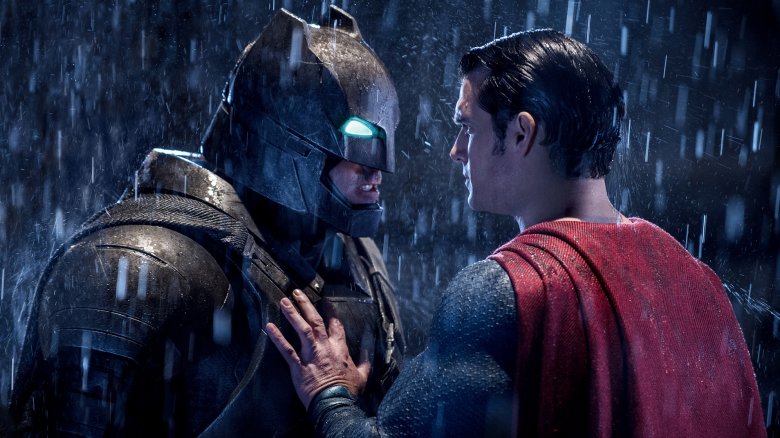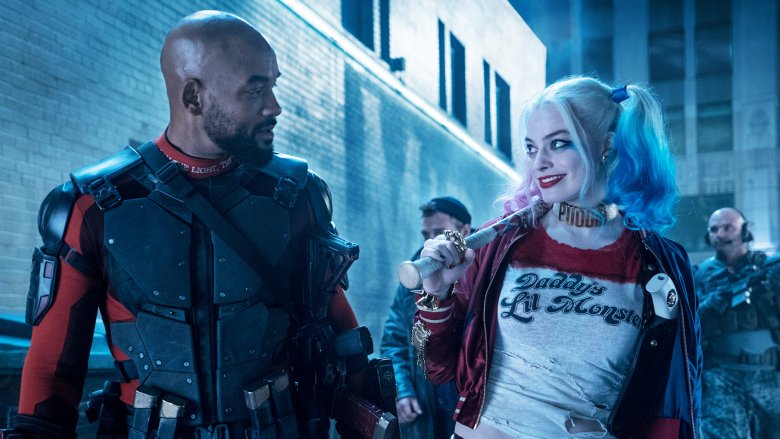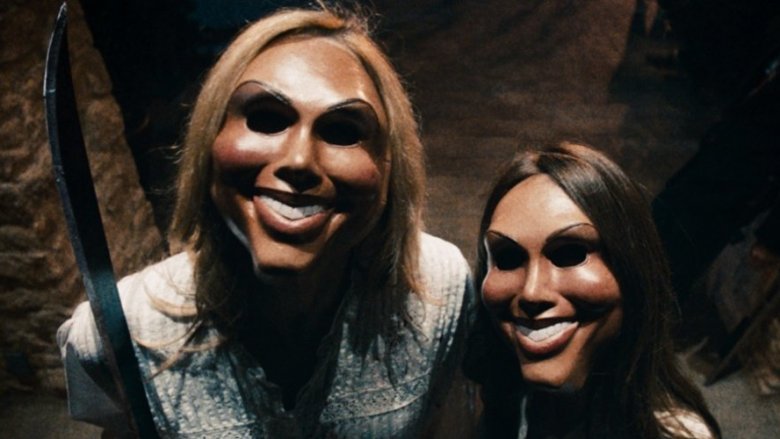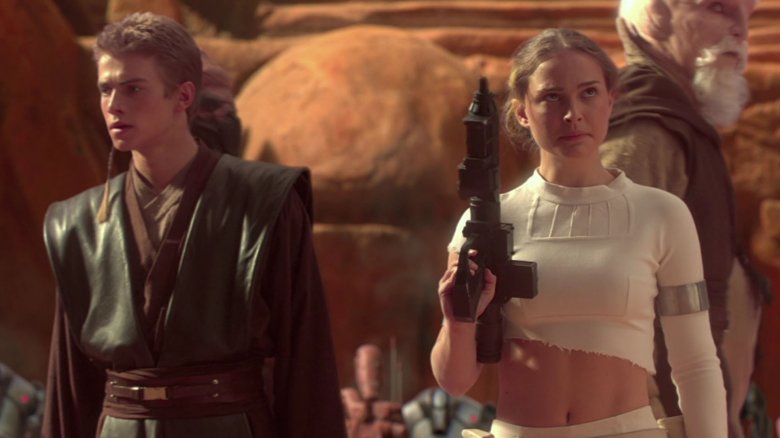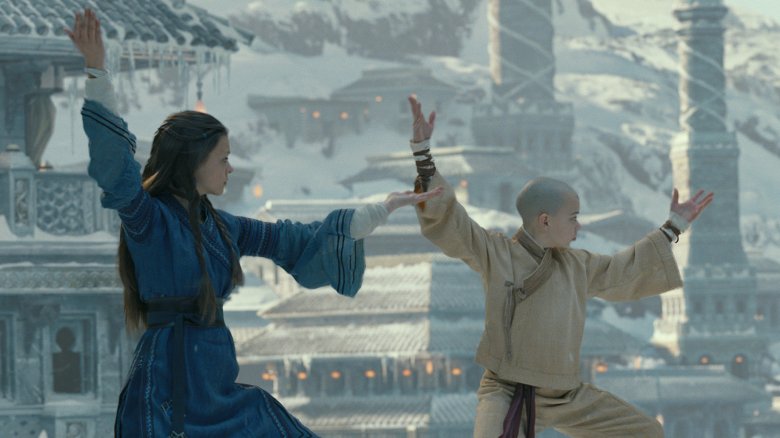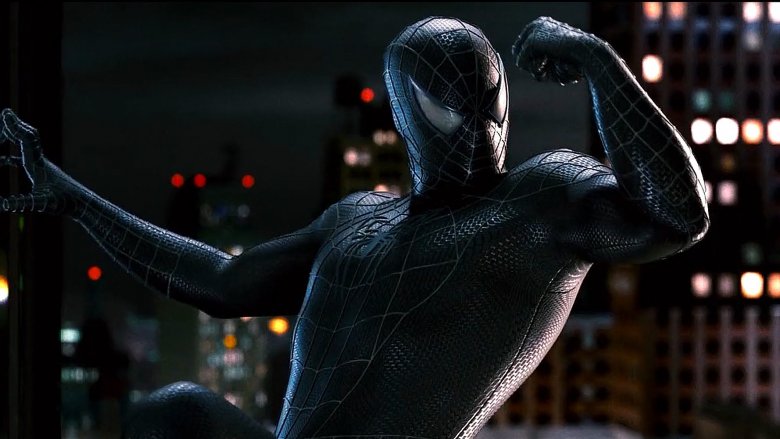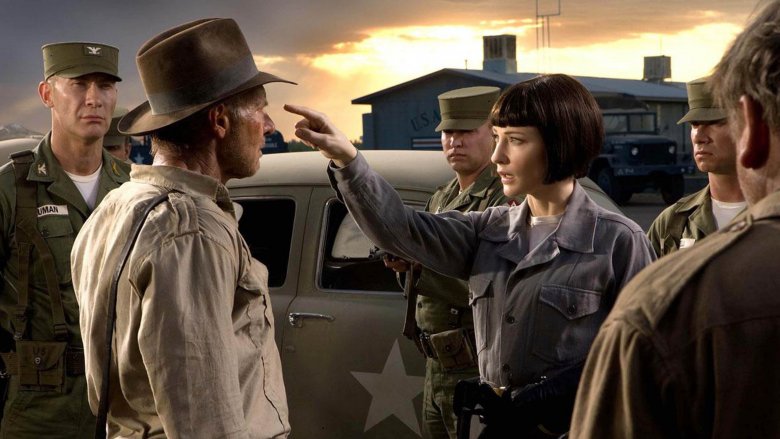Bad Movies With Good Premises
There's something uniquely painful about watching a film that should have been great and thinking to yourself "how did they mess this up?" This feeling only grows more intense when you stop to consider the millions, if not hundreds of millions, of dollars they cost to produce. That's a lot of money down the pipes, and it should've resulted in some legendary movies.
Great ideas get lost under bad execution in Hollywood more often than we'd like to think, and it can happen for any number of reasons. Maybe a director with too much power got carried away in pursuit of their vision, or a screenwriter couldn't handle the concept, or a studio meddled too much and sullied a great idea — whatever the reason, these movies all have one thing in common: they blew it. If a film's basic idea is a fresh glass of milk, then these movies spilled it all over the carpet. Get ready to read up on some of the worst movies with the best premises.
Off the rim
Pacific Rim: Uprising's premise was great. It proposed a simple, but scary, idea: what if the kaiju hivemind (controlled by aliens called the Precursors) could infiltrate human minds and pit us — and, by extension, our jaeger robots — against each other? The movie even had a solid foundation with which to implement this potentially franchise-spawning idea: Newt, who'd drifted (mind-linked) with a kaiju in the last film, leaving him vulnerable to a Precursor takeover in Uprising. While the movie seized this opportunity, that's one of the few things it got right, with most of the rest of the story stunted by uneven quality and a troublesome screenplay.
Take, for example, the concept itself: while the movie does turn Newt into the Precursors' emissary, it bafflingly morphs him into a cheesy, absolute goofball sci-fi villain in the process. This takes all the weight out of the big twist (the reveal that he's a slave to the Precursors) and turns the latter half of the movie into a complete joke. While the film initially benefits with snazzy camerawork and direction from director Steven S. DeKnight, as it goes on, it relies on comparatively static, uninteresting cinematography. Similarly, the film's writing drops off past the halfway point, eschewing smart twists and pacing in favor of throwing out random jokes and idiotic narrative curveballs, so as to be "lol so random." Uprising had the premise, but needed a completely reworked second half in order to nail the execution.
Well, they got part of the title right...
On the surface, Sucker Punch is a movie about girls using their imaginations to stave off insanity while they organize an escape from a mental asylum. Underneath that intriguing facade, however, it's actually just two hours of Zack Snyder ordering nubile actresses to prance around attractive, yet hollow, CGI environments. There's no doubt that the movie's core concept is interesting; it's a premise that's brimming with tension, agony, and intensity. Yet it fails to capitalize on these three key ingredients and instead resorts to playing up its impressive CGI spectacle — and its female leads' skimpy outfits.
While exploitation films can be entertaining and definitely serve a purpose in cinema, Sucker Punch shouldn't have been one, for two reasons: first, it's PG-13, meaning it likely never had enough leeway to do what Snyder seemed to want. Second, it shouldn't have relied on its sexy aspects to carry such a sharp premise. Had Sucker Punch invested any actual character development in its leads, they would've been so much more than curvaceous cardboard cutouts. The girls' imagination sequences, which include fights against giant samurais, zombie Nazis, and dragons, would've had so much more impact. Instead, all we got was a painfully shallow, disturbingly dismal two-hour lingerie commercial stuffed to the gills with top-of-the-line special effects.
Not the happiest place on Earth
Disney's Tomorrowland sported a simple, but extraordinary, concept: what if the most intelligent humans on Earth built a secret world just for themselves, one hidden in plain sight of our own reality, but only visible to those wearing a special pin?
It's one of the richest sci-fi premises Disney's ever had, right up there with the likes of Tron. Sadly, director Brad Bird and screenwriter David Lindelof never tapped into the concept's full potential. Instead, they elected to realize the absolute shallowest possible interpretation.
Tomorrowland is a movie that, at its core, ended up being about Britt Robertson reminding George Clooney that the future isn't set in stone. Couple that clichéd lesson with a follow-up moral about the importance of respecting the environment, and you've effectively summed up Tomorrowland's two big themes. That's just about all there is to this movie, unfortunately. The whole "why have smart people forsaken us" angle, interesting as it is, is only briefly explored via Hugh Laurie's character, and that's the only time the film even remotely taps into its own narrative potential.
Couple the wasted premise with childish inclusions like a Keegan-Michael Key android who shoots goofy laser guns and a bathtub escape pod that launches with the force of a ballistic missile, and you've got a recipe for a PG-rated, family-friendly failure. If ever there was a completely wasted concept, it's this one. This could've been the next Matrix.
Martha, Martha, Martha
This film is easily one of the saddest examples of a bad movie with a good premise. Warner Bros. took their coolest idea ever, Batman going up against Superman, and ruined it. It was perfectly simple: take the two biggest, most iconic superheroes in western culture and pit them against each other. It should've been glorious... but thanks to shallow writing and an misguidedly dark tone, it wasn't.
Most of the movie's problems go back to the weak screenplay. The first act of the movie is near flawless, but when Batman's dodgy motivations for acting like an angry teenager come into play, the movie starts to fall apart. Instead of having Lex Luthor overtly manipulate the world's dumbest genius, Bruce Wayne, why not have Luthor genuinely aid him in his crusade against Supes via a team-up between Wayne Enterprises and Lex Corp.? That could've easily led to a proper Batman/Superman showdown — one that didn't revolve around both heroes stubbornly refusing to talk out their differences until one shouted his mom's name. And what was up with Lex kidnapping Superman's mother in the first place, all while he flaunted pictures of her gagged, bound, and crying? C'mon, that's just dark, especially for a movie about caped superheroes. Yeesh.
Squad goals
A movie starring just the bad guys, including the Joker and Harley Quinn? Exciting! Or, at least, it would've been, had Warner Bros. and David Ayer not copped out and turned their anti-Justice League into a cheap ensemble movie filled with would-be heroes. The only character to remain a villain throughout the duration of this movie was the Joker, and even his goals were motivated by compassion. As for everyone else, from Killer Croc to Deadshot to Harley Quinn, each and every one of 'em started out as sort of tough and rambunctious, but by the end, all members of the titular Squad were nothing but C-grade quasi-heroes. The movie took its gutsy concept's killer hook and turned it into a toothless superhero ensemble adventure, fueled by slightly-edgier-than-average good guys (and gals).
Even for those few who are willing to overlook the movie's betrayal of its own premise, there aren't a lot of silver linings in Suicide Squad. The film's tone is a mess, the plot is hackneyed "save the world for the umpteenth time" tripe, and the film under-utilizes its only truly original element — its controversial take on the Joker. Had Jared Leto's version of the character received a bit more time to shine in the film's theatrical cut, maybe most people wouldn't have written him off as a two-bit gangster. Perhaps Warner Bros. can atone for all these cinematic transgressions in Suicide Squad 2.
It gets better
The Purge franchise has developed into one of the more interesting film series going, but its first installment was a disappointing initial step. The first movie's simple premise of "what if people had one night to commit any crime they wanted" was simple, elegant, and brimming with promise. Unfortunately, the original Purge squandered that rich concept by confining its action to a single residence. It took a horror premise with infinite potential and boiled it down to a standard home invasion film. Worse yet, it was a mediocre jumpscare-fest filled with two-dimensional characters, only barely carried by a solid performance from Ethan Hawke.
Thankfully, for all of The Purge's flaws, its sequels made leaps and bounds of progress when it came to capitalizing on that core concept's potential. Both The Purge: Anarchy and The Purge: Election Year greatly improved upon the first Purge, taking the action out onto the streets so viewers could see the true scope. In that respect, the series has evolved and at least partially made good on its promise over time.
Now all of us hate sand
It's not hard to imagine George Lucas' elevator pitch for Attack of the Clones: the chosen one begins his fall to the Dark Side while a hidden enemy erects a new army with which to fight his puppet war. It's a premise rife with political intrigue, personal stakes, and galactic-sized conflict. Had Lucas had a real producer, or a small army of real producers, to give him some much-needed oversight, we might've seen a version of Episode II that lived up to that Shakespearean concept's potential. Attack of the Clones was set to have everything: tantalizing romance, planet-sized battles, close-quarters duels, you name it. It had the foundations of cinematic legend. What we got, however, was nowhere near legendary.
Star Wars Episode II: Attack of the Clones, while scattered with bright spots like Obi-Wan vs. Jango Fett, the clone army, and the Geonosis sequences, is a jumbled mess right up until the film's final act kicks into high gear. Its plot is muddied with overly long, poorly written romantic interactions between Anakin and Padme, dull political exposition, and goofy action beats that serve no purpose other than breaking up the monotony. All these issues boil down to the screenplay, more or less — had the foundations been retooled to incorporate better dialogue and a tighter narrative structure, the thrilling action would've felt justified. Alas, what we have is but a messy outline of what might have been.
The other Avatar
Aiming for a semi-faithful adaptation of the epic Nickelodeon cartoon series Avatar: The Last Airbender, the film version was ever only going to be about one thing: a child, saddled with the avatar spirit, who must accept his destiny and commit himself to a life of mastering control over nature's elements in order to combat evil. It's a simple premise, but it packs a wealth of rich, mythological, fantasy-imbued classicalism. While the cartoon captured this idea's essence perfectly, the movie utterly failed.
The live-action Avatar adaptation surrounds its central premise with such atrocious execution that one can't help but be distracted by the cinematic schlock that obfuscates an otherwise innocent, earnest core. The Last Airbender's cast of child actors, while well-intentioned, are absolutely abysmal and almost single-handedly tank the film, although they're spared the full blame thanks to director M. Night Shyamalan's misguided efforts. Shyamalan, who also wrote the movie, filled The Last Airbender with robotic dialogue, paced it at a speed that'd make pouring molasses seem exciting, and neglected to inject even an ounce of the source material's fantastical, self-aware humor, all of which resulted in an overall disaster of a film.
Tom Holland says 'thank you'
On paper, Spider-Man 3 had everything going for it: the hero finally confronting his dark side while going up against the three toughest foes of his superhero career. It was a killer premise, amplified by the fact that those three villains were the New Goblin, Venom, and Sandman. Spider-Man 3 had the symbiote suit, an epic rogues' gallery, emotionally conflicted characters — how could it possibly go wrong?
Evidently, pretty easily. Spider-Man's "dark side" got a bad name thanks to the film's emo Peter Parker sequences, Venom got a bad rep for being a shoehorned-in finale villain with no real development, and the overall film was labeled an uneven mess due to its absolute overload of subplots. Mary Jane's failing singing career got a spotlight, but we couldn't get more than a few minutes of screentime for Venom?
Spider-Man 3 was a movie with a great premise, but director Sam Raimi and the rest of the creative team mismanaged the heck out of it. Admirably so, considering most of the movie's flaws boil down to too much ambition, but even so, a bad movie is a bad movie.
Nuking the fridge (and almost the franchise)
What do aliens, indestructible refrigerators, and Shia LaBeouf have in common? They're all in Indiana Jones and the Kingdom of the Crystal Skull, also known as the one Indiana Jones movie most people prefer to forget. The general distaste for this movie is completely justified — what business does a UFO have in an Indiana Jones adventure? While fantasy has always been an element of the series, this tedious entry nosedived Indy through some straight-up sci-fi schlock.
It's a shame the movie panned out the way it did, as the core premise was pretty solid: an aging Indiana Jones goes up against the Soviets during the Red Scare era. Couple that setup with a solid throughline revolving around Indy and Marion's son, and you've got the recipe for a pretty solid Indiana Jones sequel. Too bad the film seemed disinterested in itself, and left viewers feeling like unwanted passengers strapped along for a chore of a ride. Throw that pervasive sense of exhaustion on top of the nonsensical plot, and you're left with a good premise trapped inside a bad movie. Hopefully the next one's better.
